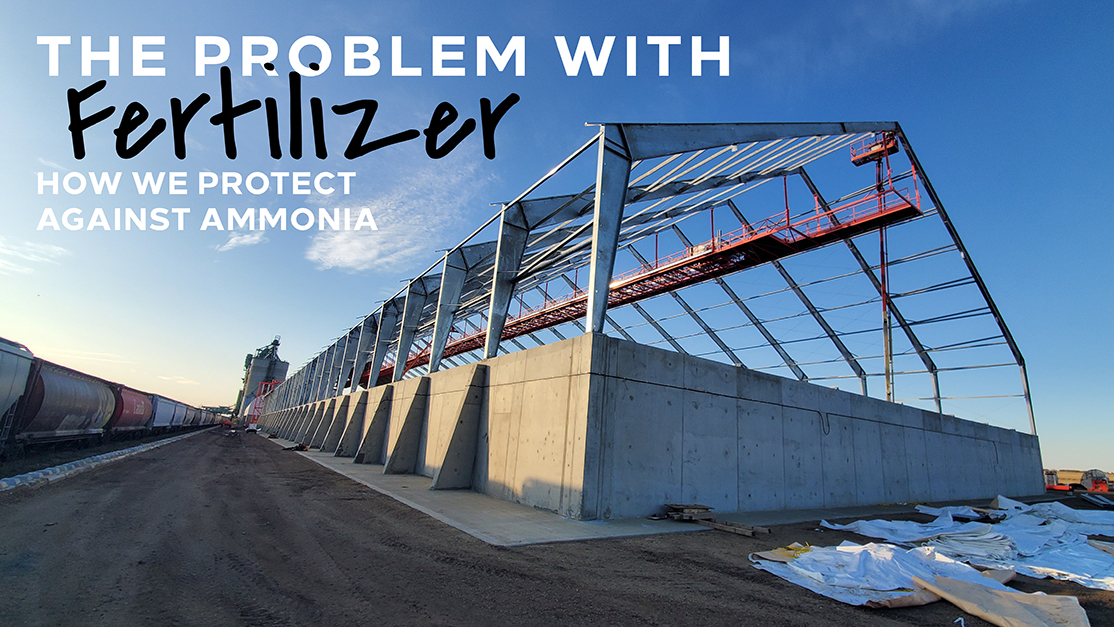By: Alyssa Rewucki & Nik Kowalski
We know fertilizer presents some unique challenges, and our fabric buildings are here with the solutions for all of your storage needs.
Fabric Structures Counter against Ammonia
Fertilizer releases ammonia which can cause corrosion in materials such as steel. Our hot-dip galvanized steel trusses provide life-long corrosion resistance to minimize any damage. These fabric structures are also rust-resistant and durable, standing put in the harshest environments in North America.
Supplying steel fabric structures with corrosion resistance is one of the advantages we provide you — we deeply care about both your employees’ health and safety. Our ventilation solutions protect your workers from breathing in harmful ammonia fumes by dissipating heat and discharging the fumes. This leads to safer and more productive work environments.
Though the ammonia produced form fertilizer is not considered to be flammable, a large energy source could present the risk of ignition or explosion. To counter this, our fabric building storage solutions provide opportunities to incorporate the appropriate vent or air systems to protect your business, from your employees to your assets.
Ventilation in Fabric Buildings
While fertilizer can suck out moisture out of the ground, it can release a high amount too. The moisture and water leaks in storage buildings are extremely harmful to fertilizer. The leakage both hardens and crystalizes the fertilizer, ruining the product.
This process is more common in traditional wood and steel buildings and is where ventilation in fabric buildings becomes such a crucial advantage. We use as much natural ventilation as possible in order to prevent any corrosion. Natural gravity ventilation is a process in which a natural flow of air is established without the use of powered equipment, such as fans.
Our fabric buildings use massive vents to create this process. Not only are the vents cheaper than fans, but they are a more efficient way to properly ventilate your building. Putting these vents on the end walls and peak of the fabric building allows wind to move the hot air up and out of the building’s roof.
Fertilizer Storage in Fabric Buildings
On top of protecting your business from the harmful effects of ammonia, moisture, and other harmful substances, fertilizer storage is easier than ever with our column-free fabric storage buildings. With extraordinary height and building clearances of up to 300 feet wide, our fabric structures allow heavy equipment and vehicles to maneuver with ease.
Factor in the minimal construction time required to raise fabric buildings, and they are the complete option to effectively preserve fertilizer storage. The safety of your product and business is our top priority. We guarantee to meet your expectations and then some.
We understand our industries and we know how to both mitigate and eliminate any building problems. So whether it’s fertilizer or any type of agricultural buildings, our fabric buildings are your best option when considering the cost, durability, and environmentally friendliness of your operations, especially in the agriculture industry.




